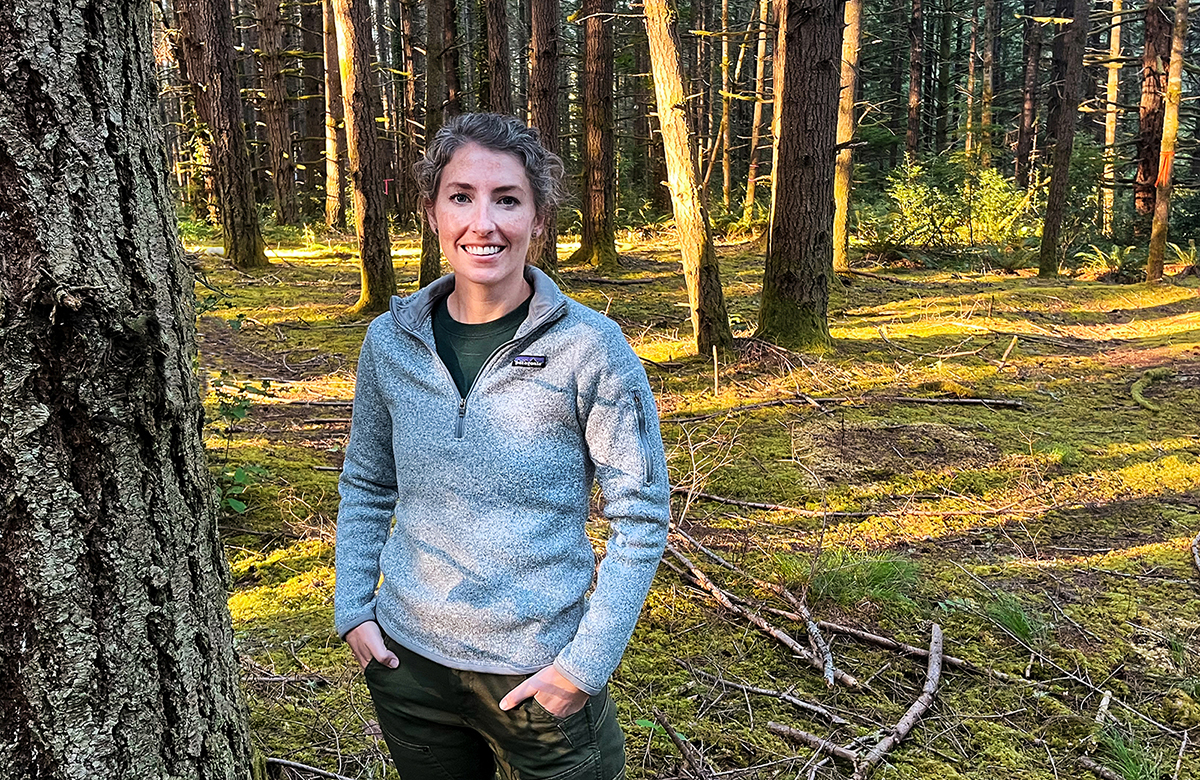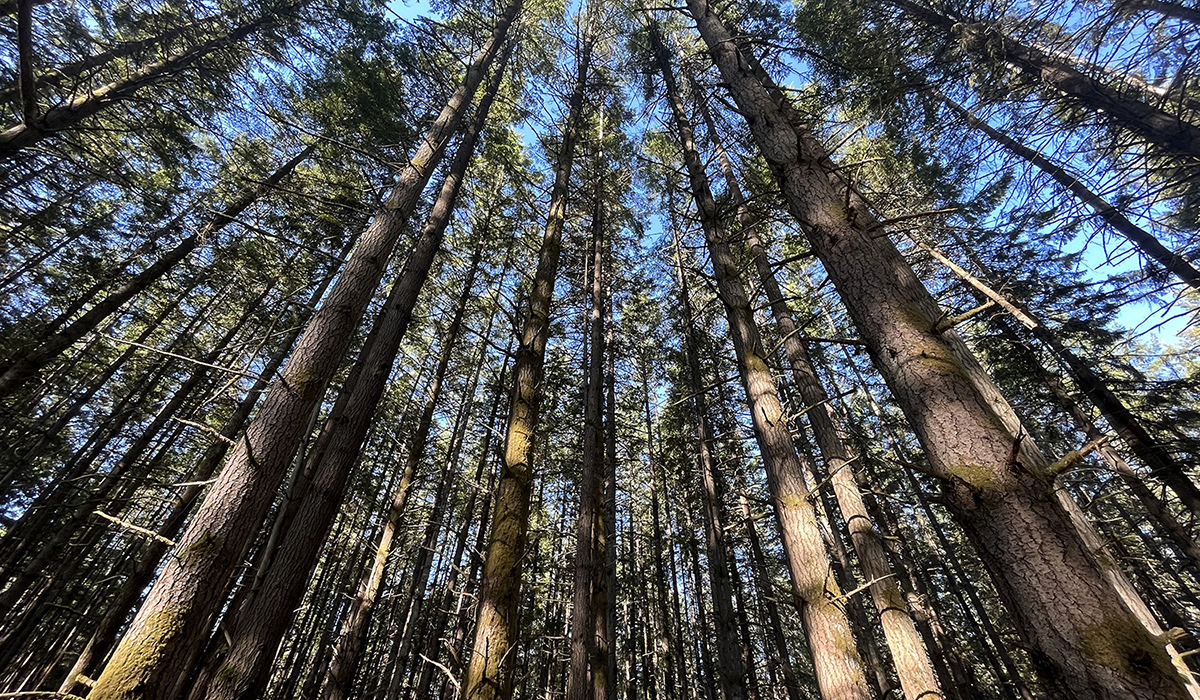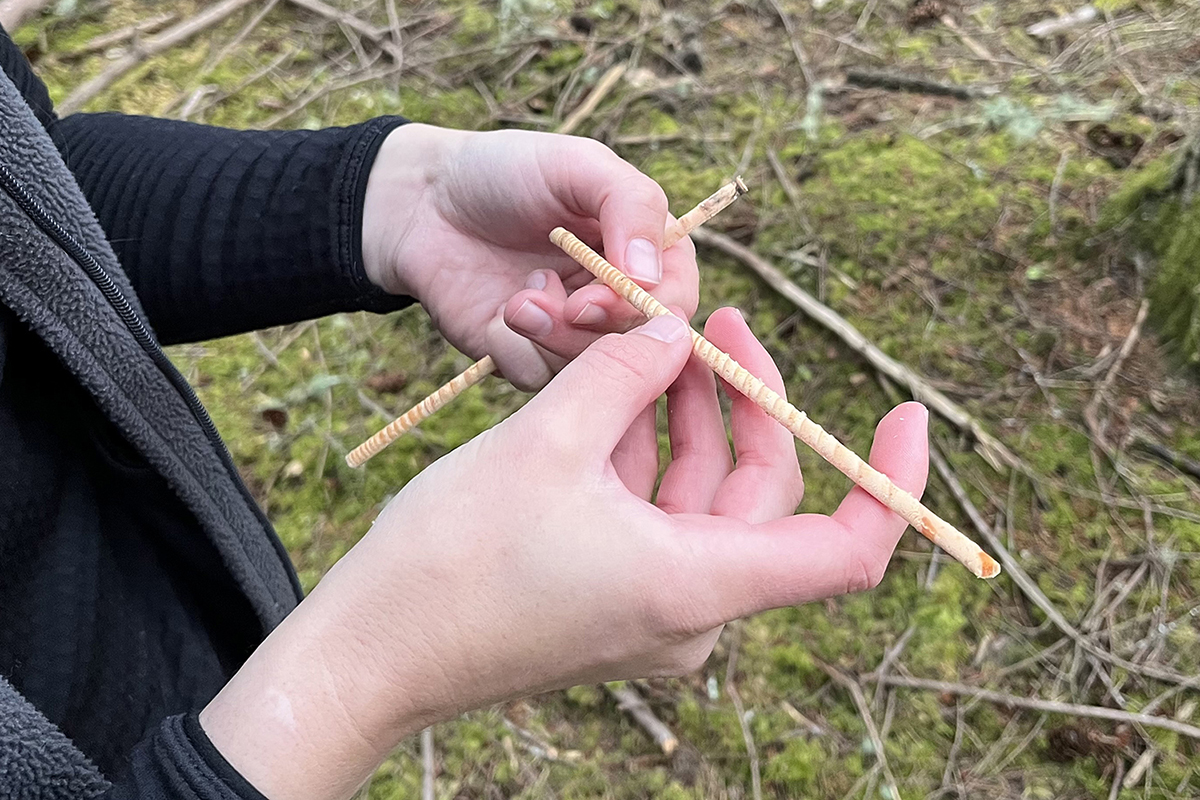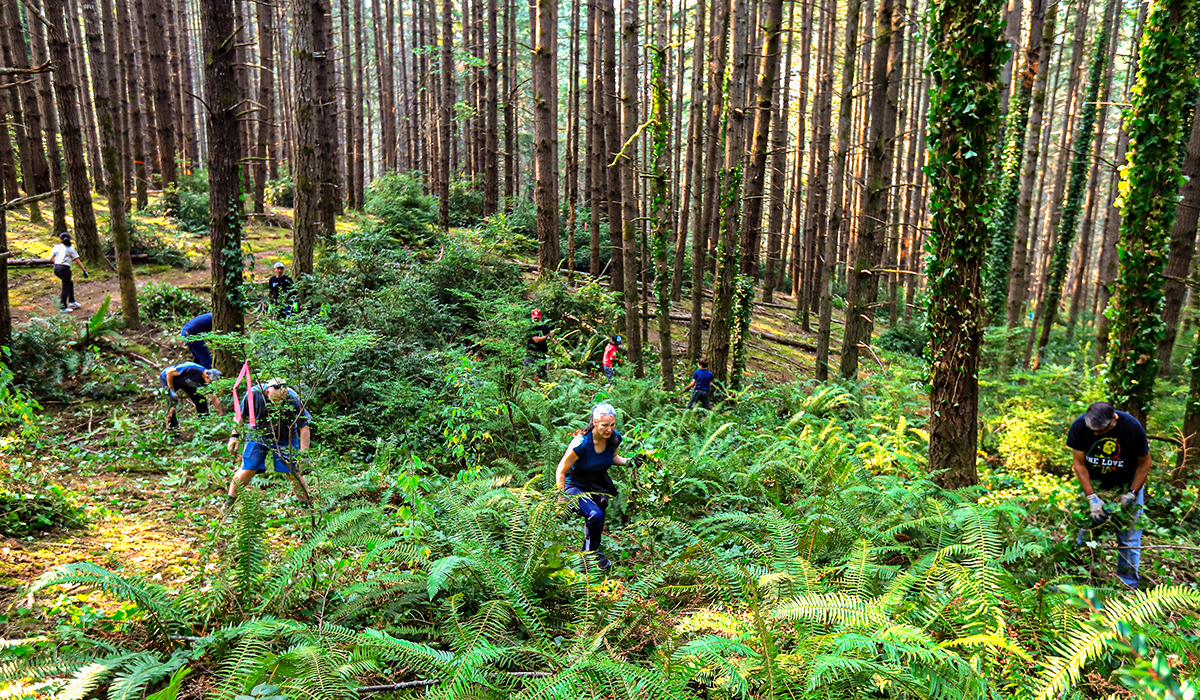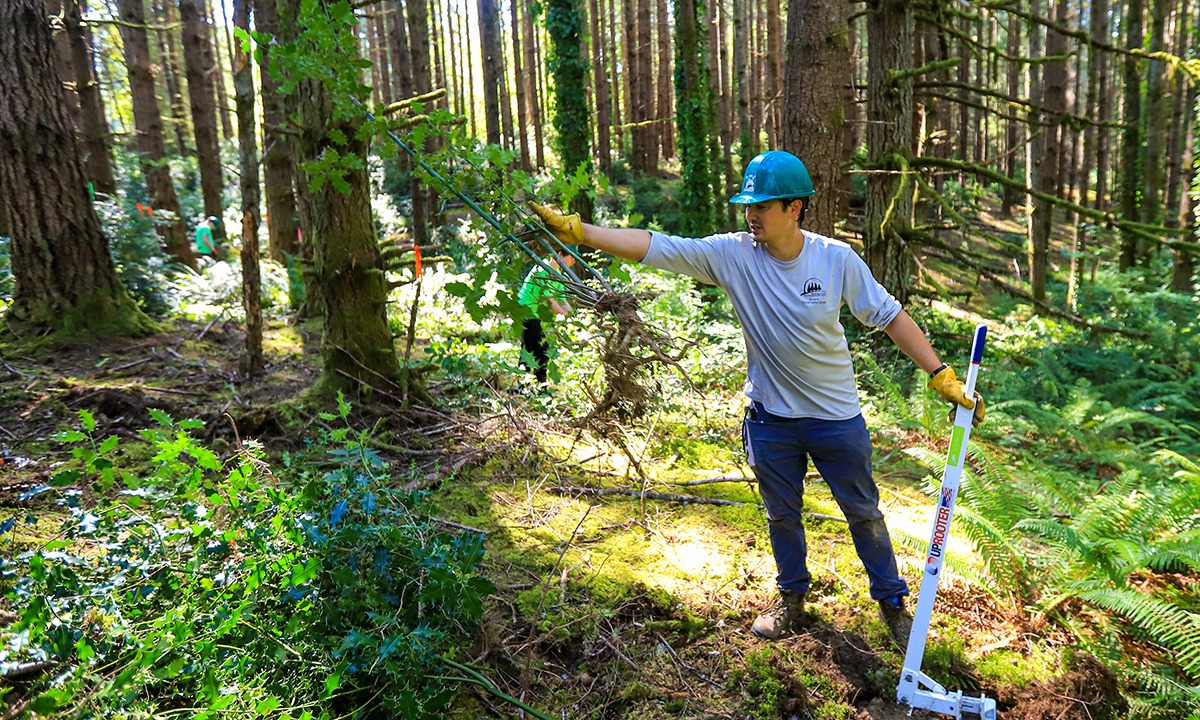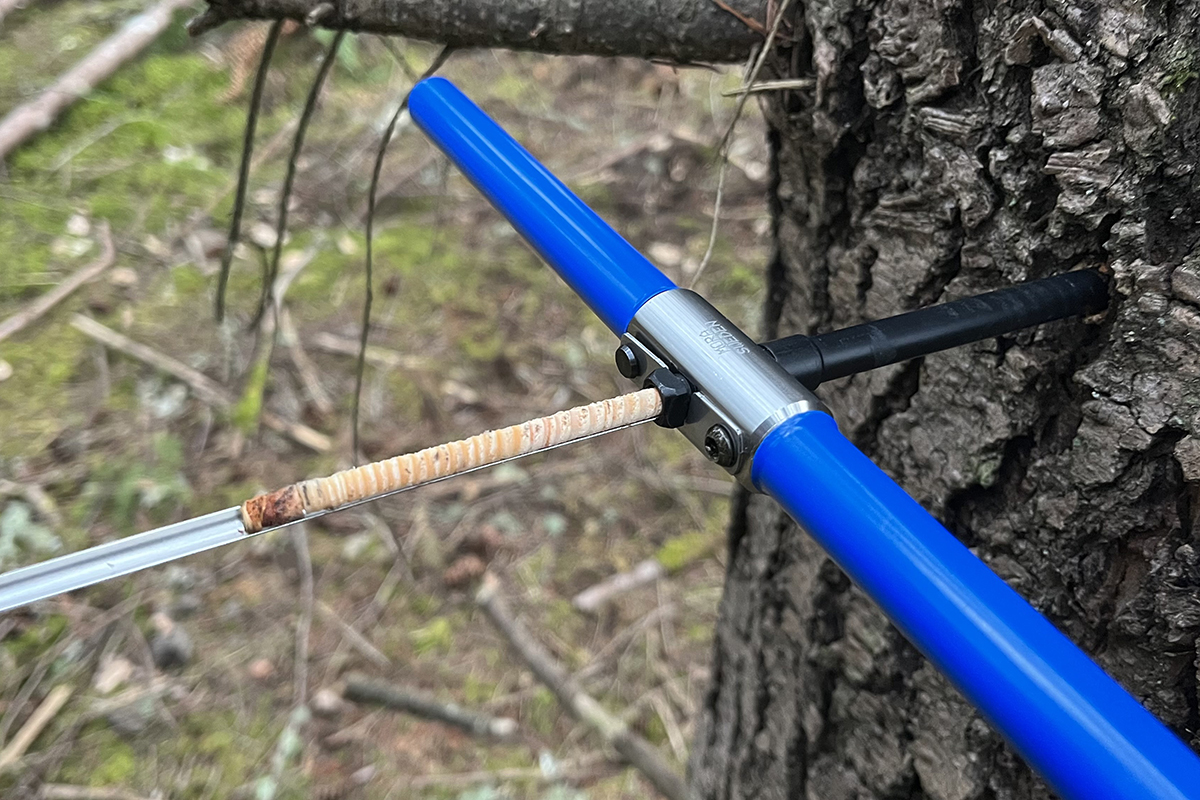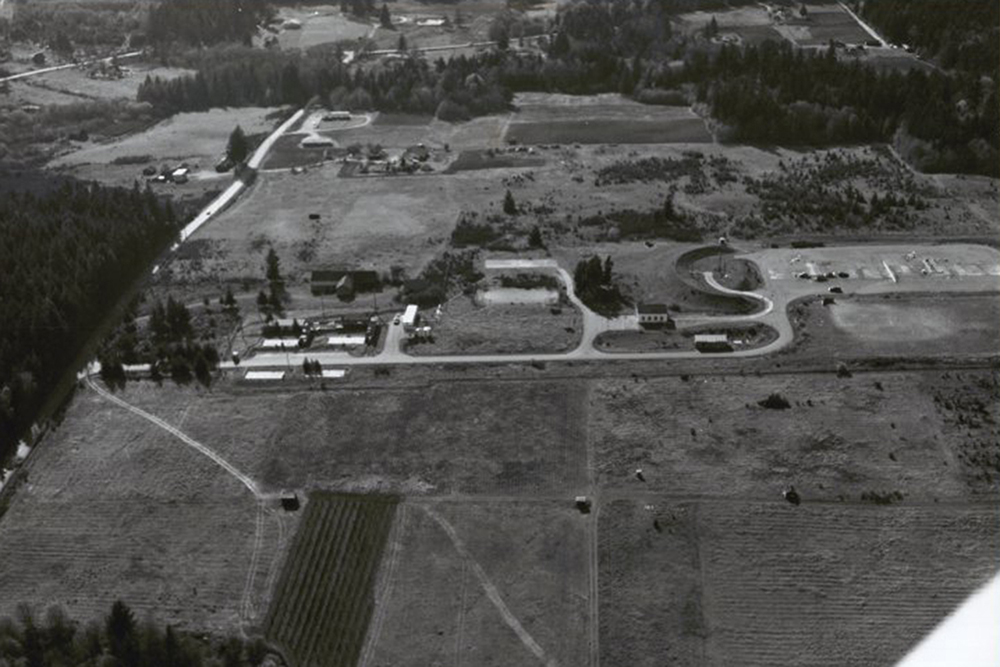Trees this tall shouldn’t be this thin.
Bundled like pencils they stand, ring upon ring of bare, withered branches scaling their skinny trunks toward tiny puffs of green canopy aloft. In a Pacific Northwest defined by majestic forests of Douglas fir, the trees on the new Strawberry Hill Park addition have never quite made the grade. Now the challenge is helping the best ones move forward.
“It should not be this heavily stocked for this size of tree,” says Lydia Roush, natural resources manager for Bainbridge Metro Parks, scanning the rolling stands of troubled firs along park’s west edge. “It’s kind of a miracle more trees haven’t come down, or they’re not in even worse shape.”
The 10-acre parcel reflects the shifting uses of the island landscape, its natural and cultural history. Ancient forests were cleared for timber and, here, agriculture. Several generations of berry farming followed. When the fields went fallow, nature moved in to reclaim the land, as nature will. The soil’s latent “seed load” exploded, and thousands of young trees raced each other toward the sun before the canopy could close over them. So it’s gone for the past 50-odd years.
You can see it in their rings: a 5-10 year burst of enthusiastic growth – wide, healthy circles at the core – followed by decades of stunting and stagnation as the trees fought each other for precious nutrients and sunlight. Trees grew taller but never put on a healthy girth. Limbs and canopies withered. Parts of the forest grew at an astonishing 300 trees per acre, half-again above a sustainable density. Many grew, few thrived.
“They’ve been in such a competitive phase,” Roush says, “this is what you see.”
Islanders get a lot from trees: beauty, shade, screening from built areas, poetic inspiration and the transcendence of a quiet walk in the woods. In a warming world, their most important natural function – carbon sequestration – has taken on new urgency.
Problem is, the Strawberry Hill trees are even doing much of that. Carbon sequestration, Roush says, is a function of the trees adding new mass each year, and stunted trees are low functioning at best. It’s hoped that thinning will help the remaining trees bulk up, and boost the understory below.
“Once we open this up and let some sunlight in,” she says, “I think what’s here will really take off.”
Ironically, while the tippy trees reel and sway in the wind, the stand’s sheer density helps keep it upright. Roush likens thinning to “a high-risk game of Jenga” – removing the “blocks” to the point where the best trees will still stand on their own, hopefully to thrive.
“There are two theories – you can leave it and not do anything and it will prune itself, or you can come in and help it along,” Roush says. “It’s better to come in and release some of the stress in this stand, in hopes that we don’t lose the whole thing.”
John Benjes, volunteers and Student Conservation Corps during recent restoration events at Strawberry Hill Park.
Bike Park begins with restoration
An anonymous donor gave $1 million to the Bainbridge Island Parks & Trails Foundation to purchase and preserve the 10-acre property for community use.
Central to Winslow and the main schools campus, and with all of the perks of parking and restrooms already built in nearby, it’s the ideal spot for an expanded dog park and the island’s first-ever dedicated bike park.
“It’s an unbelievably beautiful place for bike trails, a perfect spot,” says John Benjes, a member of the Park District’s bike park advisory group. “Just the lay of the land, it’s got plenty of slope for great trails, and a lot of variability in the slopes to make very interesting riding. Every trail will be different, every trail will be fun for every rider.”
Benjes and local mountain bike clubs have jumped at the chance to help restore the property’s ecology in advance of bike park construction. Club volunteers are turning out at the Park District’s Conservation Work Parties through the fall, grubbing out holly, ivy and other invasives.
Seattle-based Evergreen Mountain Bike Alliance is designing the bike park, to feature downhill runs of progressive difficulty with jumps, berms and other challenging features. A skills area will let new and inexperienced riders hone their chops.
The bike park plan is expected to go to the Bainbridge Island Park Board by the end of the year. Fundraising by the Parks & Trails Foundation will follow.
“The excitement around the bike park is high, and that’s fun to be part of and channel as we plan to raise funds to build,” said Mary Meier, Parks & Trails Foundation executive director. “At the same time, stewardship is central to our mission and our partnership with the Park District. The gift of this forest brings the extra benefit of bringing a sick forest to health, and learning from that and honoring those who’ve stewarded the land before us.”
Tree thinning will begin this winter, with replanting of natives to follow – ferns, flowering shrubs and others appropriate to the zone. Pines, a staple of the more arid east side of the Cascades, may be introduced for their drought tolerance.
Roush said the bike runs are being routed to protect the understory, and riders will be encouraged to stay “on course” and not veer off into natural or newly replanted areas.
The restoration effort heralds more active management of the island’s hundreds of acres of forested parkland. Winslow’s Moritani Preserve will see more thinning on its west and north boundaries as part of a 5-year stewardship plan, and the Park District is assessing the health of tree stands at other parks including Grand Forest East.
To forests long taken for granted as self managing and sustaining, the reality of climate change brings a panoply of new stressors: heat, drought, destructive fungi, insect infestation. This brings the opportunity to restore and replant the forest with climate change in mind, for resilience and adaptation.
“It’s a good site for us to start at. It’s very easy to see that this is not a healthy stand of trees,” Roush says. “We never want to see trees cut or lost, but in this situation, it’s the only way to preserve what’s left, and make space for natural regrowth.”
——
JOIN THE FOREST RESTORATION: Join Bainbridge Island mountain bikers and other volunteers at the next two Strawberry Hill Conservation Work Parties, 10 a.m. Saturday, Oct. 8 and Saturday, Nov. 12. Volunteers will continue the removal of invasive holly and ivy at the future bike and dog park sites. Park by the ball fields at the northwest corner. Information: Morgan Houk, morgan.houk@biparks.org.
Core samples drawn from a typical fir at the Strawberry Hill forest show wide rings – and healthy growth – through the first 5-10 years, followed by constricting rings over many years of stagnation and stunting.
Agriculture on and around the site of today’s Strawberry Hill Park. Images courtesy of Bainbridge Island Historical Museum.



